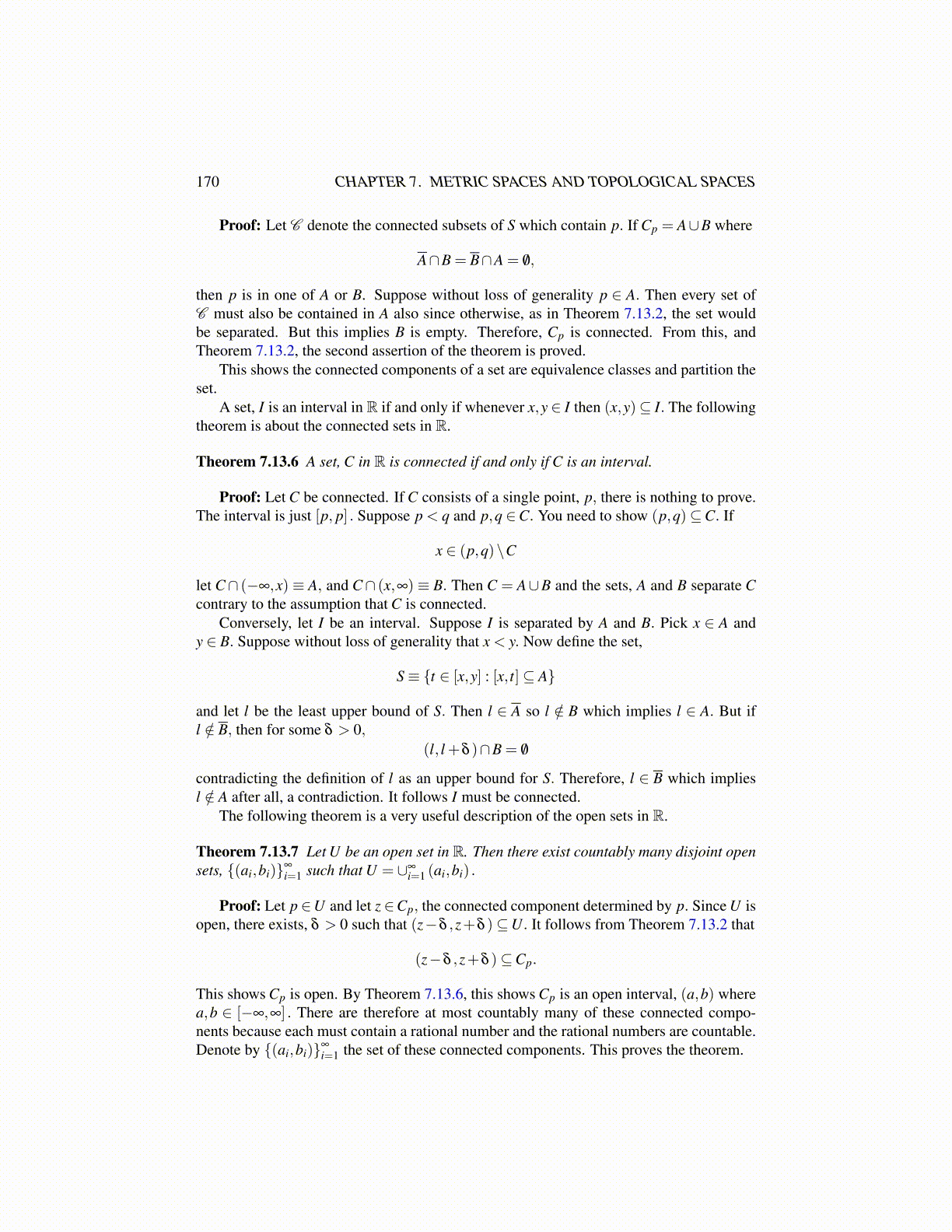
170 CHAPTER 7. METRIC SPACES AND TOPOLOGICAL SPACES
Proof: Let C denote the connected subsets of S which contain p. If Cp = A∪B where
A∩B = B∩A = /0,
then p is in one of A or B. Suppose without loss of generality p ∈ A. Then every set ofC must also be contained in A also since otherwise, as in Theorem 7.13.2, the set wouldbe separated. But this implies B is empty. Therefore, Cp is connected. From this, andTheorem 7.13.2, the second assertion of the theorem is proved.
This shows the connected components of a set are equivalence classes and partition theset.
A set, I is an interval in R if and only if whenever x,y ∈ I then (x,y)⊆ I. The followingtheorem is about the connected sets in R.
Theorem 7.13.6 A set, C in R is connected if and only if C is an interval.
Proof: Let C be connected. If C consists of a single point, p, there is nothing to prove.The interval is just [p, p] . Suppose p < q and p,q ∈C. You need to show (p,q)⊆C. If
x ∈ (p,q)\C
let C∩ (−∞,x) ≡ A, and C∩ (x,∞) ≡ B. Then C = A∪B and the sets, A and B separate Ccontrary to the assumption that C is connected.
Conversely, let I be an interval. Suppose I is separated by A and B. Pick x ∈ A andy ∈ B. Suppose without loss of generality that x < y. Now define the set,
S≡ {t ∈ [x,y] : [x, t]⊆ A}
and let l be the least upper bound of S. Then l ∈ A so l /∈ B which implies l ∈ A. But ifl /∈ B, then for some δ > 0,
(l, l +δ )∩B = /0
contradicting the definition of l as an upper bound for S. Therefore, l ∈ B which impliesl /∈ A after all, a contradiction. It follows I must be connected.
The following theorem is a very useful description of the open sets in R.
Theorem 7.13.7 Let U be an open set in R. Then there exist countably many disjoint opensets, {(ai,bi)}∞
i=1 such that U = ∪∞i=1 (ai,bi) .
Proof: Let p ∈U and let z ∈Cp, the connected component determined by p. Since U isopen, there exists, δ > 0 such that (z−δ ,z+δ )⊆U. It follows from Theorem 7.13.2 that
(z−δ ,z+δ )⊆Cp.
This shows Cp is open. By Theorem 7.13.6, this shows Cp is an open interval, (a,b) wherea,b ∈ [−∞,∞] . There are therefore at most countably many of these connected compo-nents because each must contain a rational number and the rational numbers are countable.Denote by {(ai,bi)}∞
i=1 the set of these connected components. This proves the theorem.